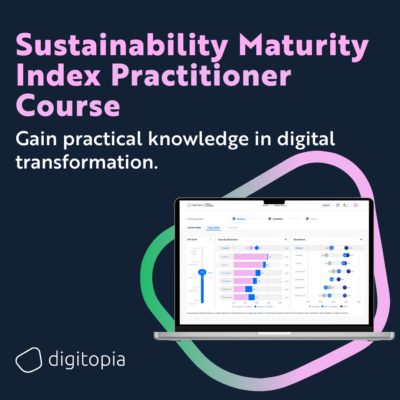
March 22 marks a significant day in our calendars – World Water Day. It’s a day dedicated to highlighting the importance of fresh water and advocating for the sustainable management of freshwater resources. As we reflect on the theme of this year’s World Water Day, let’s dive into the reasons why water is indeed our most precious resource, explore the challenges of water scarcity, and discover actionable steps we can all take to contribute to water sustainability.
Water: The Essence of Life
Water is the foundation of life on Earth. It nourishes ecosystems, powers economies, and sustains every species, including humans. Our bodies, mirroring the planet’s surface, are composed of about 70% water. It’s essential for digestion, absorption, circulation, and even excretion. Without it, life as we know it would not exist.
Despite its abundance, only 2.5% of the Earth’s water is freshwater, and just a fraction of that is accessible for human use. The rest is locked away in glaciers, polar ice caps, and underground aquifers. This scarcity, juxtaposed with the necessity of water, underscores its immeasurable value.
The Growing Challenge of Water Scarcity
Water scarcity is a looming crisis, exacerbated by climate change, population growth, and increased water pollution. Currently, over 2 billion people live in countries experiencing high water stress, and by 2025, two-thirds of the world’s population may face water shortages. This scarcity not only affects individuals’ access to clean drinking water but also has broader implications for food security, public health, and global peace.
The impacts of climate change are intensifying this crisis. Altered weather patterns lead to more extreme droughts and floods, disrupting water availability and damaging infrastructure. Meanwhile, unsustainable water use and management practices deplete the very ecosystems that replenish our water supplies.
Preserving the Preciousness of Water: Actions for Sustainability
This World Water Day, let’s commit to actions that help preserve this invaluable resource:
1. Reduce Water Waste: Simple acts like fixing leaks, turning off the tap while brushing teeth, and using water-efficient appliances can significantly reduce water wastage in households.
2. Sustainable Consumption: Opt for products that require less water to produce. A diet rich in plant-based foods, for instance, typically requires less water than one high in meat and dairy.
3. Protect Water Sources: Participate in local efforts to clean rivers, lakes, and wetlands. Support policies and initiatives that aim to reduce pollution and safeguard natural water ecosystems.
4. Educate and Advocate: Spread awareness about the importance of water conservation and advocate for sustainable water policies. Education plays a pivotal role in changing behaviors towards water usage.
5. Support Water-Saving Innovations: Encourage the development and adoption of innovative technologies that enhance water efficiency in agriculture, industry, and daily life.
The Ripple Effect of Every Drop
Every action we take to conserve water can have a ripple effect, contributing to a more sustainable and equitable world. As we observe World Water Day, let’s remember that the responsibility to steward this precious resource wisely is in our hands. By making conscious choices about how we use and conserve water, we can ensure that this vital life source remains abundant and accessible for all, today and in the future.
Water is not just a resource; it’s the lifeblood of our planet. This World Water Day, let’s renew our commitment to protecting and preserving every drop. Together, we can secure a sustainable water future for generations to come.
Navigating the Waters of Sustainability: The Role of Measurement and Roadmaps
In our journey towards a more sustainable future, especially in the context of conserving our most precious resource, water, the adage “what’s measured gets done” rings particularly true. The complexities and uncertainties surrounding water conservation and sustainability call for a structured approach to manage and mitigate these challenges effectively. This is where the Sustainability Maturity Index (SMI) measurement and transformation solution comes into play, offering a beacon for companies navigating these turbulent waters.
The Importance of Measurement in Water Sustainability
The first step in any successful sustainability journey is understanding where you stand. Measurement, in this regard, is not merely about quantifying usage or waste but encompasses a comprehensive assessment of how water is intertwined with all facets of a business – from operations and supply chain to product development and employee engagement. The SMI provides companies with a detailed analysis of their current sustainability performance, including water conservation efforts, helping to highlight areas of strength and opportunities for improvement.
Crafting a Sustainable Roadmap
With a clear understanding of their sustainability status, companies can then proceed to develop a robust roadmap that aligns with their unique goals and challenges. This roadmap serves as a strategic plan, outlining specific, actionable steps to improve water efficiency, reduce waste, and implement sustainable practices throughout the organization. By setting clear targets and milestones, companies can ensure accountability and track progress over time.
The Power of a Structured Approach
The SMI’s structured approach to sustainability transformation is particularly beneficial in today’s uncertain and complex environment. It enables companies to:
– Prioritize efforts and investments in areas with the highest impact on sustainability and business performance.
– Foster innovation by identifying opportunities for sustainable solutions and technologies.
– Enhance resilience by preparing for future regulatory changes and environmental challenges.
– Build a positive corporate reputation by demonstrating commitment to sustainability and responsible water management.
Incorporating the SMI into your company’s sustainability strategy not only facilitates a more effective and efficient approach to water conservation but also contributes to broader environmental and social goals. It empowers organizations to lead by example, driving positive change within their industries and communities.
Conclusion
As we commemorate World Water Day, let us embrace the principles of measurement and structured planning with the Sustainability Maturity Index. By doing so, we can ensure that our efforts towards water sustainability are not just well-intentioned but are also impactful and enduring. In these uncertain and complex times, having a roadmap in hand is more than a strategic advantage—it’s a necessity for navigating the path to a sustainable future. Let’s measure, act, and transform, for “what’s measured gets done,” and together, we can secure a water-wise world for generations to come.



